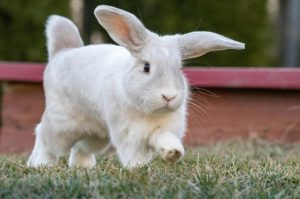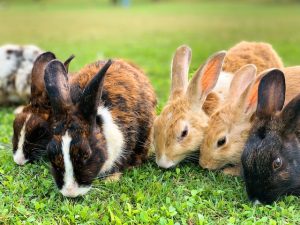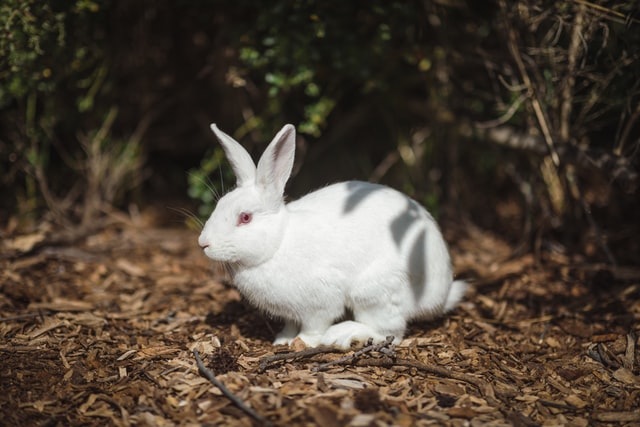
A rabbit is a pet that can really tell you a lot about itself. It experiences many emotions, but it does not hide them from the world. On the contrary, it willingly shares them with you. It only takes a moment of observation to know your rabbit's mood.
Contents
Learn to recognize the signals he sends you. Some may be obvious at first glance, others quite subtle. Still, you will quickly learn to distinguish and respond to them if you want to.
How to care for a rabbit?
The average lifespan of a domestic rabbit is 6-8 years. Deciding to have such a pet, we must ensure that we can provide him with proper care during this time. It is not just about feeding, of course. It is necessary to take care of regular visits to the vet, clean his cage, and devote time to play. Rabbits are very sociable animals and do not like solitude.
It is best to take in two rabbits at once, as one of their most basic needs is the need to interact and communicate with other members of their species. Even if we devote a tremendous amount of time to our pet, we can not replace the contact with other representatives of its breed.
Let's also remember about the proper dose of physical activity. This is quite an often overlooked need, and unfortunately, the cage alone is not enough. All rabbits need a lot of space and an enclosure, which is quite logical since, in their natural environment, they spend most of the day jumping, running and digging in the ground. The best solution (if possible) is an outdoor pen, allowing for regular walks and play and being outdoors.
Body language - why does a rabbit thump its feet?
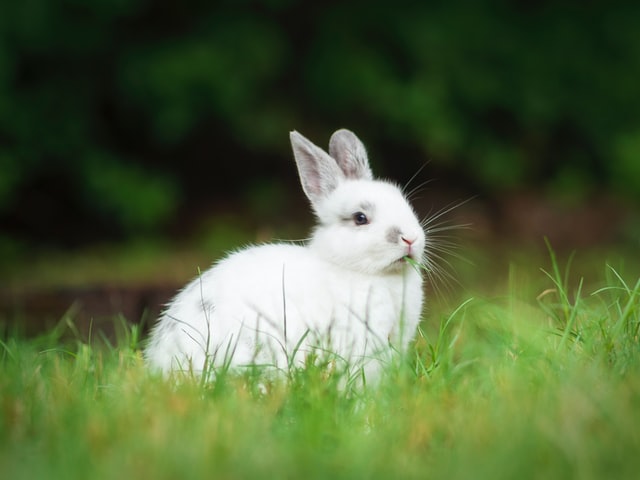
If we are concerned about providing proper care for our pets, it is worthwhile to know the body language of rabbits. In this way, we can learn a lot - to know his mood and react quickly when something disturbing happens. This will make the bunny's life happier, and we will be calmer about its condition.
One method of communicating information in a rabbit is to stomp its hind feet. This is usually done when it senses danger. Rabbits use this method to inform themselves of impending danger in their natural environment. It is also worth noting that some rabbits stomp out of nerves and stress and summon their caretaker - also if we notice that our friend stamps without reason, we can expect that it is his way of calling us to himself.
There is another situation where we may notice our rabbit stomping its hind legs. If this happens often, and the animal at that time limps or starts grinding teeth, it may be a sign of poor health and abdominal pain. In this case, you should immediately take your rabbit to a veterinarian and perform the appropriate tests.
What else should every rabbit owner know?
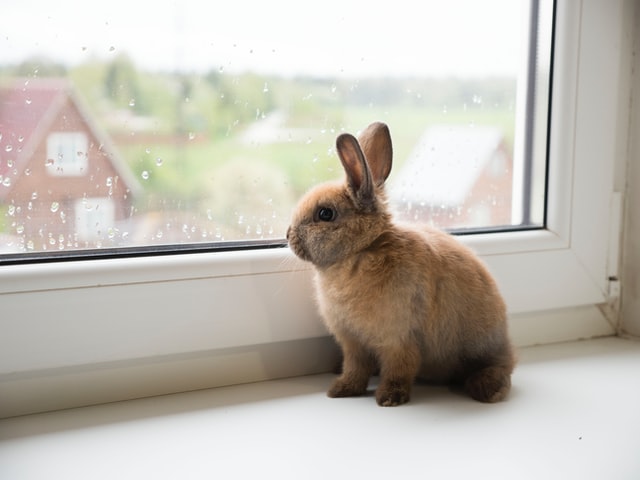
It is not only the stomping of the hind feet that matters. Rabbits are, despite appearances, very communicative animals, and if we learn their "language," we can better meet the needs of our fluffy pet. Other common ways these animals give information are:
Jumping - can be a symptom of a pet's great joy and happiness. A perfect mood is often shown by wild jumps, pirouettes, and other energetic movements.
Licking - as with some other animals, licking is also a way for rabbits to express love. So if you notice that your pet frequently licks your hand or objects that may have your scent (or another owner's) on them, it's a sign that they have affection for you!
Gnashing of teeth - this is not a clear signal. When stroking or cuddling, your rabbit may express his pleasure, but gnashing his teeth may also mean that he is in pain. This is especially likely if it is simultaneously limping, shaking, or trying to hide.
Immobility - when a rabbit freezes in stillness and, in addition, lays its ears flat on its back, it means, without a doubt, that it is afraid and senses some kind of danger. In this situation, it is best to locate the source of fear and get rid of it as soon as possible.
Jumping
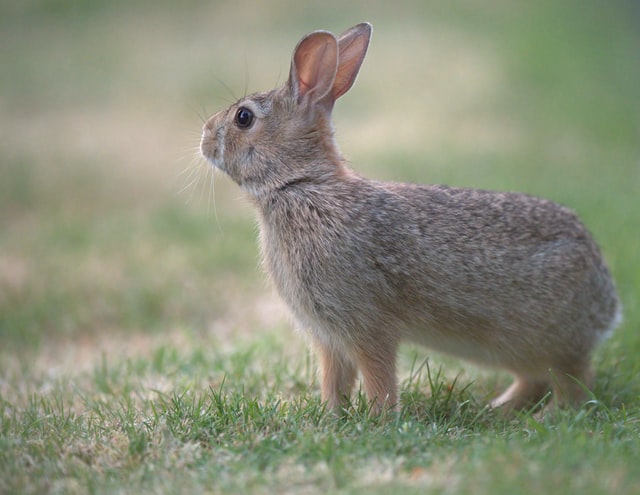
Jumping is the activity most associated with a rabbit. However, these jumps can give you something to look forward to. A proper display of acrobatics - jumping with pirouettes, spinning in the air, spreading his paws wide apart, or bouncing vigorously across the room is a sign... of your rabbit's wild joy. He's in a good mood and wants to show it to you, and share his joy, so he jumps. And he does it in a really comforting way.
Stomping
Stomping is associated with rabbits almost as much as jumping. And not without reason! In fact, rabbits do it a lot. A rabbit may stomp for several reasons. First, stomping is a sign of displeasure and anger. Your pet may have felt insulted, unappreciated, or jealous. Second, stomping can be a warning signal - your rabbit may stomp when it is afraid and feels threatened.
By stomping, it wants to warn you of danger. If your rabbit is stomping frequently and also limps or starts grinding its teeth simultaneously, it may be a sign of a tummy ache. If you notice such symptoms, take your rabbit to a veterinarian.
Nose movements
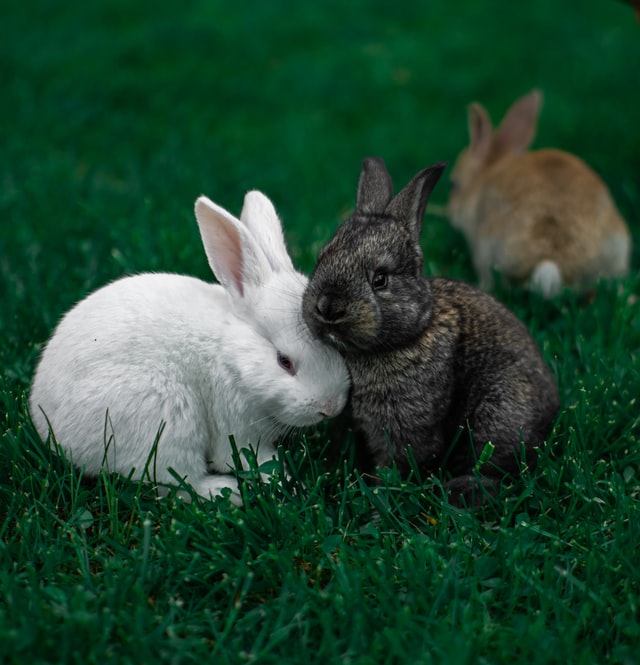
A rabbit's speech can also be more subtle. The mere movement of the nose can tell you a lot about what your pet wants by nudging its nose to get your attention. It suggests to you that it longs for your company and your attention. He wants you to play with him or stroke him.
Moving his nose also expresses more emotion than you might suspect. For example, it may signify curiosity and a desire to know what you are holding in your hand. However, the faster your rabbit moves its nose, the more fear and stress it is experiencing. Rabbits are very cautious. The nose allows them to sense danger from a distance.
Licking
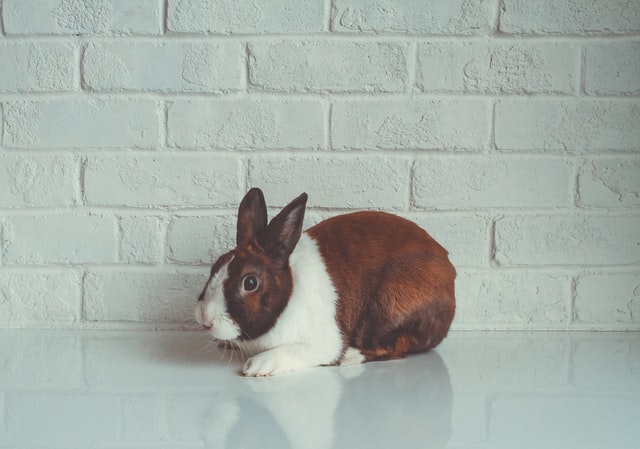
Have you ever wondered why a rabbit licks a human? Sometimes, it may also lick objects that carry your scent on them instead of you. Why? Because he loves you very much! Licking is a way of showing your love and wanting to give you pleasure. It is a natural behaviour for rabbits, and between each other, if they have great affection for each other, they behave exactly the same way.
Lying on its back
A rabbit that lies on its back is an enjoyable sight. At such moments, your rabbit is also delightful. He feels completely relaxed and safe. It is not afraid of anything, is not worried about anything, and does not feel threatened.
The belly is a susceptible point on the body. This is how rabbits behave when they are happy and just enjoying their lives. When a rabbit exposes it in your company and lies in such a position, it loves you very much and trusts you implicitly.
Stopping motionless
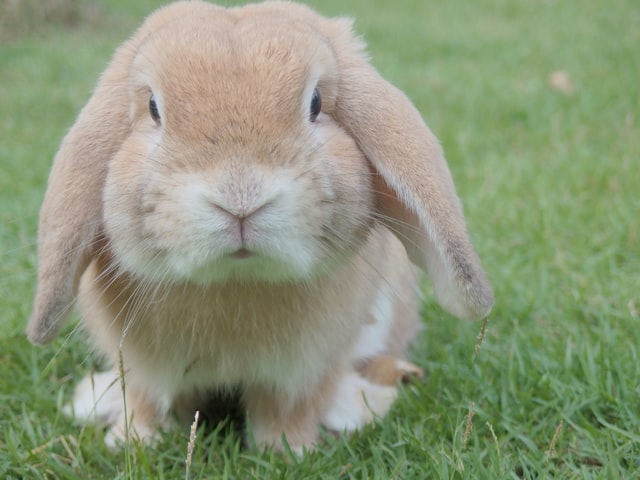
What does a rabbit do when it's scared? It runs away, of course. It is a true master of escape, moving very fast indeed. However, it does not always see a chance to escape. Then it just... freezes motionless. He also sticks to the ground and lays his ears flat on his back.
If you see your rabbit in this state, get rid of the source of fear. If, on the other hand, your rabbit is reacting this way because, for example, it has recently moved in with you, give it some time and leave it alone. This behaviour also comes straight from the nature of the rabbit. In the wild, most predators react to movement. A petrified rabbit clinging to the ground is hoping to go unnoticed or be disregarded by danger.
Inertial darting to the side
If you have a rabbit, you have noticed that sometimes it throws itself to the side as if it is inert and stops moving. Is this a bad thing? Absolutely! This is a widespread behaviour of happy, albeit tired rabbits. This is why you may see this behaviour most often after playtime. Your long-eared rabbit simply got tired and didn't want to waste the time it could have spent sleeping and recuperating.
Therefore, he throws himself to the side and falls asleep practically on the fly. Often it is practical all the same to him as he lies down. This is also a sign that the rabbit feels excellent and safe. He gets to play, but he doesn't have to worry about a place to sleep because any place is just as good and safe for him.
Grinding teeth
Sometimes you may also see your rabbit grind his teeth. He does this gently, though clearly. What does this indicate? If you are petting and cuddling him, this is a sign that your rabbit is simply fine. Even more than acceptable.
In such situations, your rabbit feels like going straight to rabbit heaven. Here, however, you must be alert and careful. Sometimes the gnashing of teeth can mean that your rabbit is in pain. This is very likely if it is simultaneously limping, shaking, or trying to hide. Then don't delay. Take your long-eared rabbit to the veterinarian as soon as possible.
Rabbit speech - summary
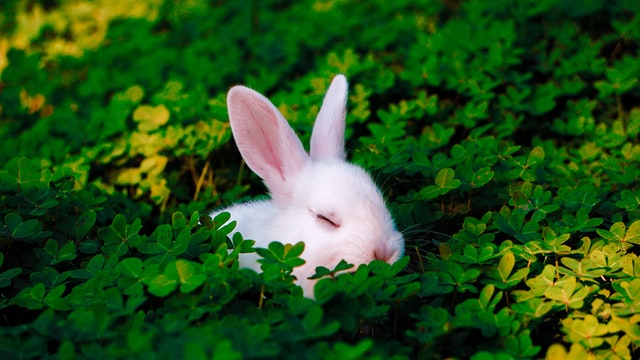
It is not true that it is impossible to communicate with rabbits. Rabbit speech is not at all as tricky as it might seem because, as it turns out, rabbits send clear messages. Joy, anger, jealousy, fear, displeasure, pleasure - a rabbit's emotions are also among the complex ones.
Your rabbit is more than happy to share them with you. All it takes is a little knowledge and patience. That's all it takes for you to read from your rabbit, almost like an open book.
Is it worth having a rabbit?
The body language of rabbits is not as difficult as it may seem. If only we take the time and patience to learn the most common ways of communication of our cuddly rabbit and thus provide him with a better life and more joy of having pet rabbits at home.



